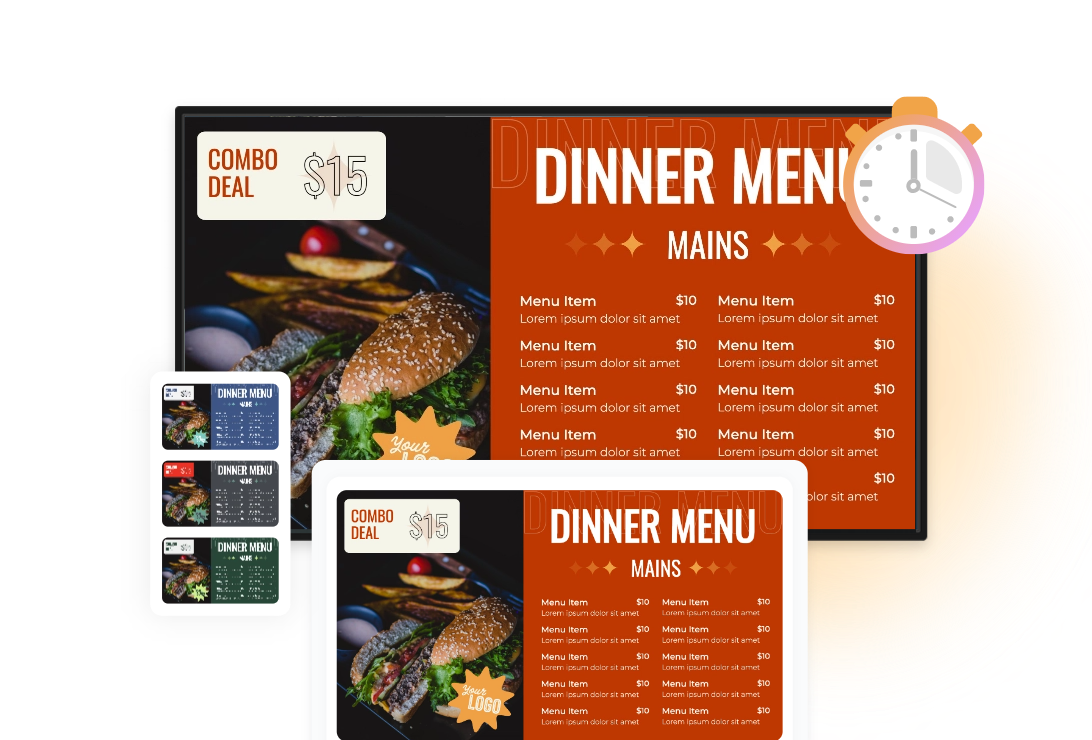Digital signage has revolutionised the way companies engage with their audiences by replacing static boards with dynamic, interactive screens. As the evolution of digital signs develops further, they are influencing how companies in many sectors communicate and advertise.
How Signs Have Changed Over Time
The journey of signage began with static boards. These were simple, fixed displays, often requiring manual updates that were time-consuming and lacked flexibility. Businesses relied on printed materials, chalkboards, and painted signs to share their messages. With the rise of technology, signage evolved. Neon signs, first introduced in the early 20th century, brought vibrant colours and illumination to storefronts, making them more eye-catching. Later, the introduction of electronic displays added dynamic elements, allowing businesses to showcase multiple messages. This was the precursor to today’s powerful digital signage solutions.The Shift to Digital: The Evolution of Signs
The evolution of signs accelerated with advancements in digital technology. A new degree of flexibility and imagination was made possible by digital displays. Businesses could now precisely target their messaging to specific audiences, change displays in real-time and manage information remotely. As part of this transition, computerised menu boards were introduced, which completely transformed sectors such as the hotel industry. Restaurants could update pricing, promote specials, and highlight new menu items with ease, creating a seamless customer experience. Dynamic content also helped shop signage, which in turn helped retail venues increase revenue by drawing in more customers.The Rise of Interactive and Personalised Displays
As the evolution of digital signs continued, interactivity became a game-changer. Today, digital displays are now also engaging audiences, not just merely broadcasting information. Touchscreens, motion sensors, and AI integration allow businesses to personalise the customer journey. Take restaurant signage, for example. Modern displays can suggest meal options based on customer preferences or highlight popular dishes at specific times of the day. Windows digital signage also lets stores attract passersby with eye-catching visuals, even in bright daylight.Benefits of Modern Digital Signage Solutions
Modern digital displays offer numerous advantages for businesses of all sizes:- Increased Engagement: High-definition visuals and animations grab attention and keep viewers engaged.
- Cost-Effectiveness: Unlike static boards, digital displays reduce the need for repeated printing, saving money in the long term.
- Real-Time Updates: Businesses can quickly adapt to changes, such as updating pricing or showcasing promotions instantly.
- Enhanced Branding: Custom designs help companies present a consistent and polished image.
- Data Integration: Some solutions incorporate real-time data, displaying live updates such as news, weather, or social media feeds.
The Future of Digital Signage
As technology continues to advance, digital displays are becoming smarter. AI-powered tools like Mandoe’s AI Magic Create allow businesses to design professional signage in minutes. By understanding user prompts, these tools generate tailored templates that align with brand aesthetics, saving time and effort. Video walls are another exciting development. These multi-screen displays create a powerful visual impact, perfect for large venues and high-traffic areas. Businesses may maximise the efficacy of their content by combining it with smart scheduling and tagging systems. This way, the relevant material will emerge at the right moment.Who Benefits from the Evolution of Digital Signs?
Businesses across various industries have embraced the evolution of signs to elevate their marketing strategies, with recent reports and studies showing just how effective digital signage can be for increasing sales, customer experience, productivity and more. From retail stores to hospitality venues, the versatility of digital signage offers tailored solutions for every sector.- Retail: Engaging store signage does more than capture attention. A 2020 survey from Nanonation found that digital signage can increase sales by up to 32% by influencing customer decisions and promoting timely offers.
- Hospitality: A 2021 study by Digital Signage Australia found that 74% of restaurants and cafes that implemented digital signage and digital menu boards as part of their ordering process saw an average 20% increase in upsell opportunities.
- Corporate: A 2018 report by Digital Signage Today found that 78% of organisations using digital signage reported significant improvement in internal communications, particularly for sharing company news, safety protocols, and employee recognition.
- Education: According to Campus Technology’s 2020 report, educational institutions that use digital signage save around 30% of their costs compared to traditional print methods for disseminating information across campus.
